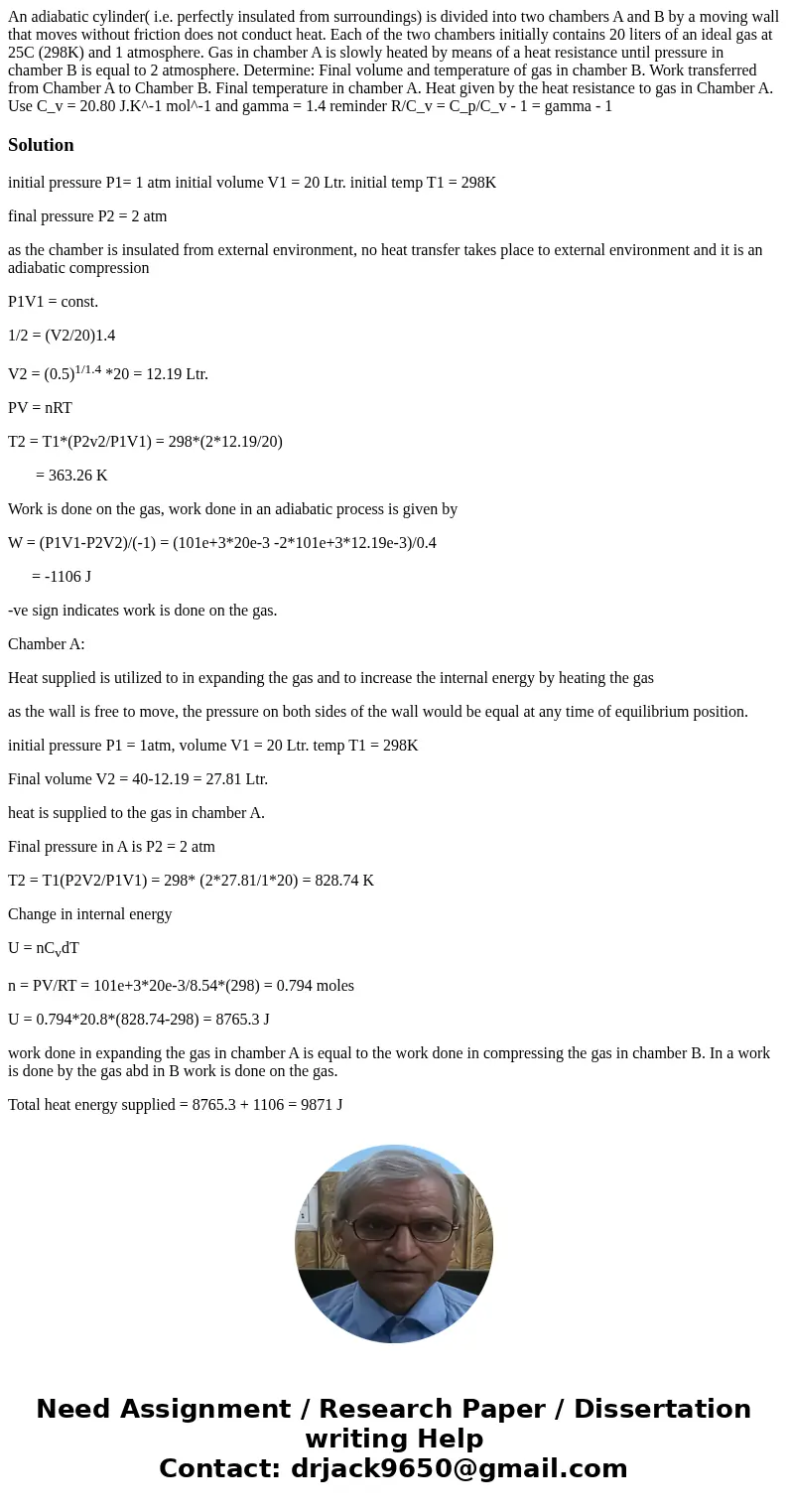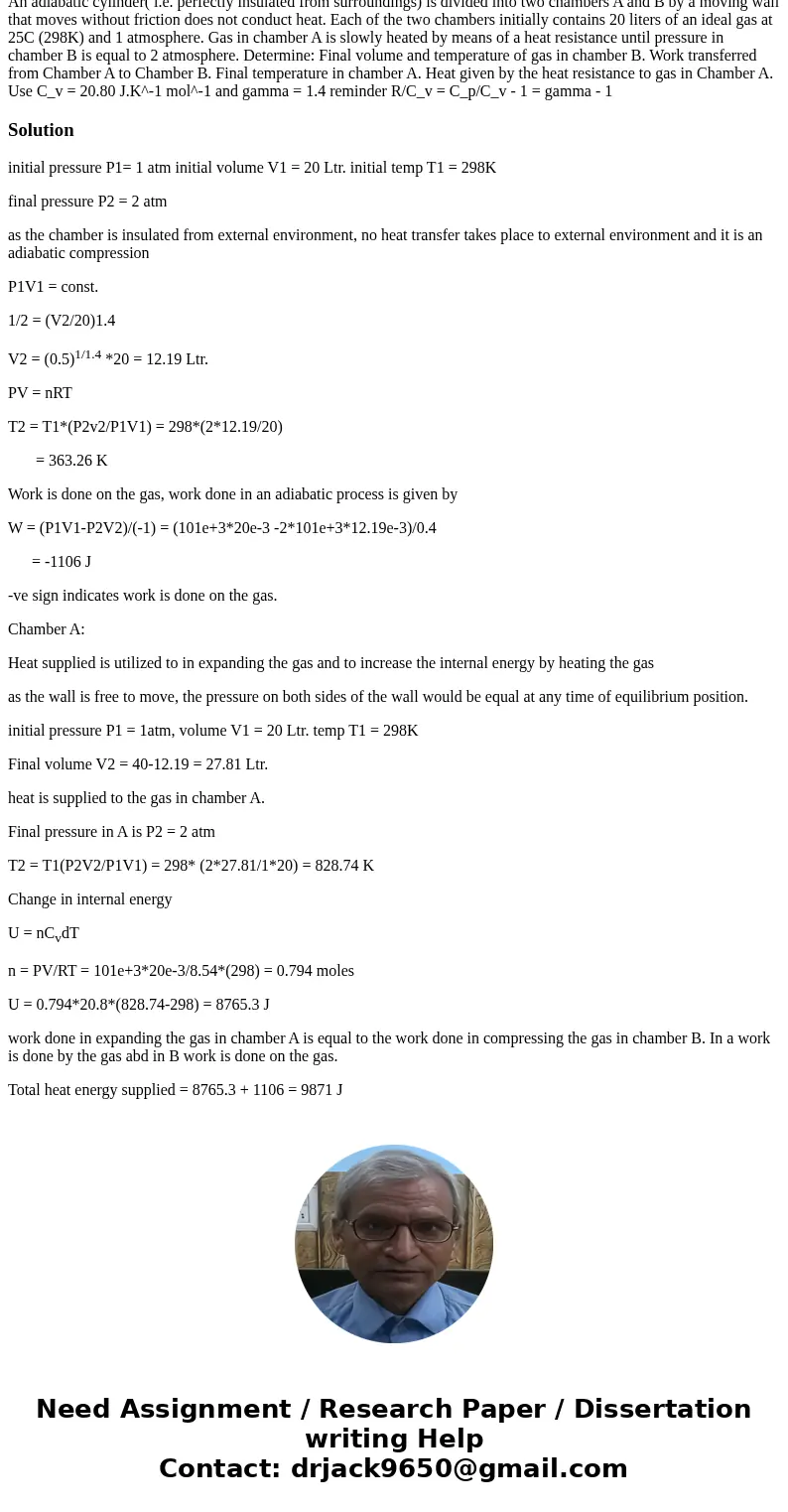An adiabatic cylinder ie perfectly insulated from surroundin
Solution
initial pressure P1= 1 atm initial volume V1 = 20 Ltr. initial temp T1 = 298K
final pressure P2 = 2 atm
as the chamber is insulated from external environment, no heat transfer takes place to external environment and it is an adiabatic compression
P1V1 = const.
1/2 = (V2/20)1.4
V2 = (0.5)1/1.4 *20 = 12.19 Ltr.
PV = nRT
T2 = T1*(P2v2/P1V1) = 298*(2*12.19/20)
= 363.26 K
Work is done on the gas, work done in an adiabatic process is given by
W = (P1V1-P2V2)/(-1) = (101e+3*20e-3 -2*101e+3*12.19e-3)/0.4
= -1106 J
-ve sign indicates work is done on the gas.
Chamber A:
Heat supplied is utilized to in expanding the gas and to increase the internal energy by heating the gas
as the wall is free to move, the pressure on both sides of the wall would be equal at any time of equilibrium position.
initial pressure P1 = 1atm, volume V1 = 20 Ltr. temp T1 = 298K
Final volume V2 = 40-12.19 = 27.81 Ltr.
heat is supplied to the gas in chamber A.
Final pressure in A is P2 = 2 atm
T2 = T1(P2V2/P1V1) = 298* (2*27.81/1*20) = 828.74 K
Change in internal energy
U = nCvdT
n = PV/RT = 101e+3*20e-3/8.54*(298) = 0.794 moles
U = 0.794*20.8*(828.74-298) = 8765.3 J
work done in expanding the gas in chamber A is equal to the work done in compressing the gas in chamber B. In a work is done by the gas abd in B work is done on the gas.
Total heat energy supplied = 8765.3 + 1106 = 9871 J


 Homework Sourse
Homework Sourse